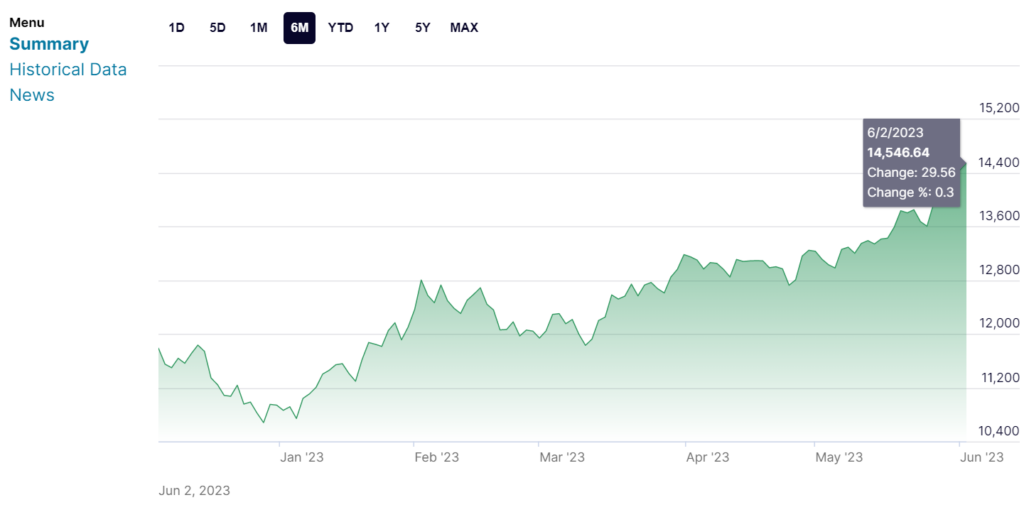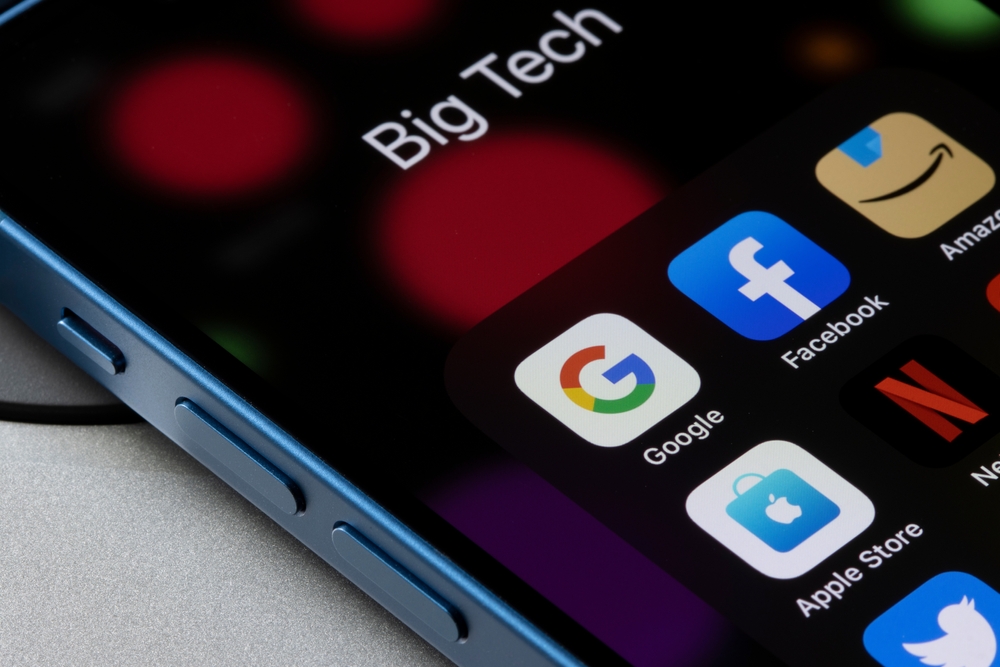The big tech industry was pulverized in 2022, with cost-cutting and mass lay-offs hitting the news. AI is signaling a revival, but whether or not it can maintain growth is yet to be seen.
In 2022, the Nasdaq 100, dominated by big tech companies like Microsoft, Meta, Twitter, and Netflix, lost around 33% of its value, erasing practically 10 years of growth. However, 2023 has signaled a rapid revival, with the Nasdaq 100 gaining about 30% to date. Alphabet shares have increased by nearly 18%, Microsoft’s by more than 15%, Amazon’s by 21%, and Meta’s by 67%.

Generative AI is one of the driving forces behind the big tech recovery effort, unlocking new avenues for research, development, and investment.
The tech rally isn’t just confined to the largest companies, as growth is reflected in startup investment, too. 2023 has seen $12.5bn in generative AI startups vs. just $4.5bn in 2022, according to the Wall Street Journal.
Many big tech researchers executives who were laid off or left their companies in 2022 have formed their own AI startups.
For instance, Suvrat Bhooshan, a former researcher at Meta, founded Gan.ai, which enables people to create customized videos and raised $5.25 million. “The entire transformers team from Google left to start their own company,” Bhooshan said.
Transformers are a type of machine learning (ML) model built and optimized for natural language processing (NLP), which AIs like ChatGPT use to understand and synthesize text.
Will the AI bubble pop?
2023 will go down as the year AI stormed into the mainstream public consciousness.
Nvidia has grown into one of the most influential companies in the world, OpenAI has been thrust into the mainstream media, and conversations about AI risk make Terminator and the Matrix seem like an imminent reality.
Meanwhile, AI – particularly generative AI such as ChatGPT – has quickly embedded itself in all sorts of products and services.
Demand for AI-powered tools has soared as companies look to take advantage of streamlined workflows. This led to an explosion of smaller-scale AI tools incorporating advanced models, like GPT-3 and GPT-4, using cloud-based API.
Rapidly increasing demand for AI innovation came at the right time for big tech employees who lost their jobs or left their companies over the last few years.
However, analysts are doubtful whether AI will overcome market forces to instigate a bull market. For instance, Chris Haverland, global equity strategist at Wells Fargo Investment Institute, told the Wall Street Journal, “While some are calling this a new bull market, we would caution investors that bear markets have rarely ended prior to economic recessions or while the Fed is still tightening monetary policy.”
Dan Wang, a Columbia University business professor, said, “It’s really exciting…But it’s really hard to say that it’s the kind of thing that will lead the charge back into a bull market.”
In late May, the Bank of America called AI a “baby bubble” which could succumb to tightening financial conditions.
AI faces regulatory risk
Another challenge facing AI’s “baby bubble” is forthcoming regulation. Regulation in the US and EU is moving, albeit the US is still only seeking opinions from AI leaders and the public on regulating AI.
Meanwhile, in the EU, some countries, like Italy, have already temporarily limited AIs like ChatGPT, with France, Germany, and Ireland discussing how to mitigate some of the AI’s immediate risks.
AI regulation is sure to set new norms for how AI companies can operate and the obligations they need to meet. OpenAI CEO Sam Altman already teased leaving Europe if the AI Act’s rules turned out to be too onerous, a comment he later retracted.
Undoubtedly, AI is leading a rally across big tech and a welcome rejuvenation of the market for startups. Still, numerous hurdles must be overcome to maintain this electric pace of growth.





